In this article, we will present 3 separate solutions to 3 separate issues associated with using the ISNUMBER function.
The animation below shows one these issues and its solution: ISNUMBER is displaying the wrong result because the cell is formatted as text instead of number. We solve this by converting cell B5 to a number.
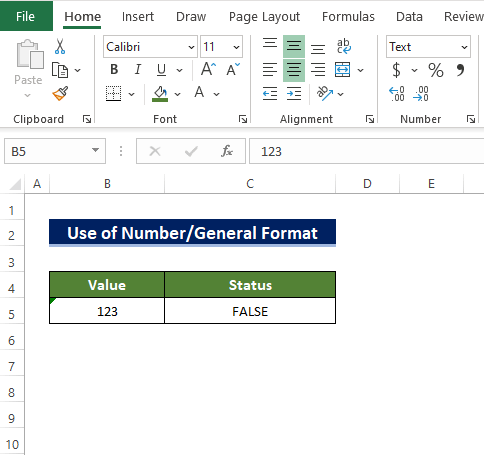
We used Excel 365 edition in preparing this article. To avoid compatibility issues, we recommend you do the same.
Reason 1 – The Cell is Formatted as Text
Sometimes cells that contain numeric values are actually formatted as text. The ISNUMBER function applied to these cells will return FALSE, although there are numbers in the cells.
In the following example, the ISNUMBER function in cell C6 is showing FALSE, when we would expect it to return TRUE because cell B6 (the reference cell in the function) appears to contain the number 123.
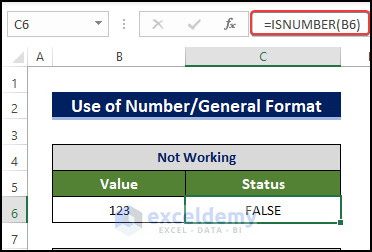
Upon investigation, it turns out cell B6 had been placed in a text format before the value 123 was entered.
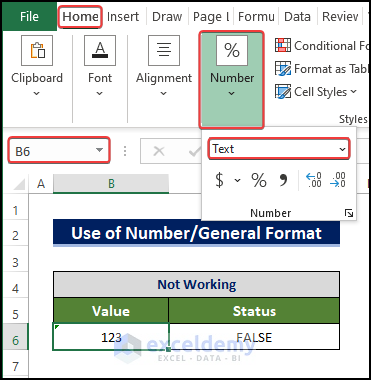
The ISNUMBER function thinks there’s a text value in the cell, not a number.
Solution – Change the Cell Format to Number/General
There should be a warning flag in cell B6, indicating that that a format mismatch has been detected by the ISNUMBER formula.
- Select cell B6 and choose Convert to Number from the warning drop down menu.
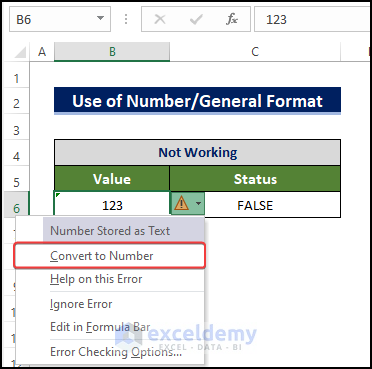
Now the ISNUMBER function shows the correct status in cell C6 because the cell format has been changed to General format.
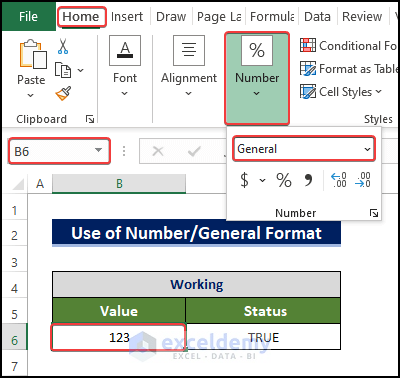
Read More: How to Use COUNTIF & ISNUMBER to Count Numbers in Excel
Reason 2 – The Cell Is in Text Format Due to Using the LEFT/RIGHT Functions
Using the LEFT or RIGHT function will convert the cell content to text, so in order to use the ISNUMBER function on such cells, we can use the VALUE function to first convert the text format to number format.
In the below formula in cell C6, we are trying to determine whether there is a number in cell B6 or not.
But despite cell B6 containing a numerical value, cell C6 is showing FALSE, which is incorrect.
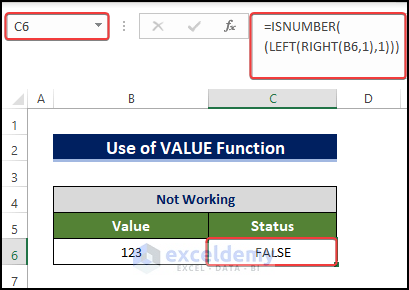
Solution – Use the VALUE Function to Convert the Cell to Number Format
To resolve the issue, we use the VALUE function just before the LEFT function. Using the VALUE function converts the text output of the LEFT function to numbers, meaning the ISNUMBER function now returns the expected result.
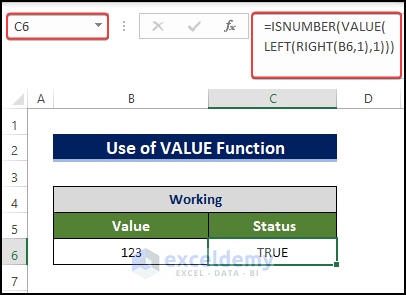
Reason 3 – Special Characters
Special characters in a cell will convert the cell values into text
In the example below, there is a special character in cell B6, after the value 123. As a result, the formula ISNUMBER referring to cell B6 returns False. The special character $ in cell B6 is causing the function to see the number in the cell as text.
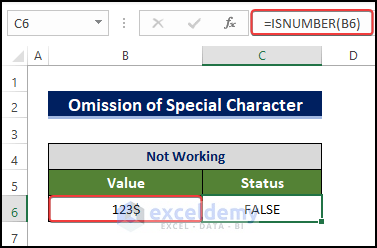
Solution – Remove the Special Character Using Find and Replace
Excel’s Find and Replace feature is a simple way to remove the special characters.
Steps:
- Select the cells with the special characters.
- Press Ctrl+H to open the Find and Replace dialog box.
- In the dialog box, enter $ in the Find what box.
- Enter a single space in the Replace with box.
- Click on Replace All.
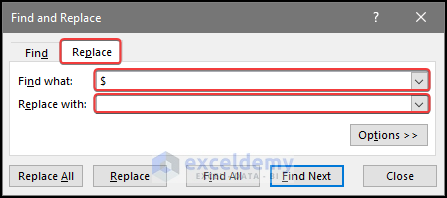
After removing the special characters, the Status is showing that the ISNUMBER function is working properly.
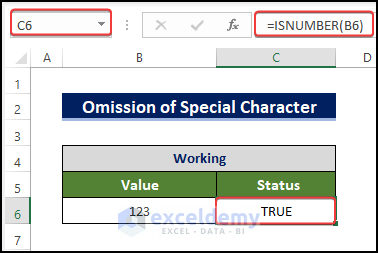
Read More: Use ISNUMBER Function with IF and Then Statements in Excel
Download Practice Workbook
<< Go Back to Excel ISNUMBER Function | Excel Functions | Learn Excel
Get FREE Advanced Excel Exercises with Solutions!

